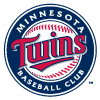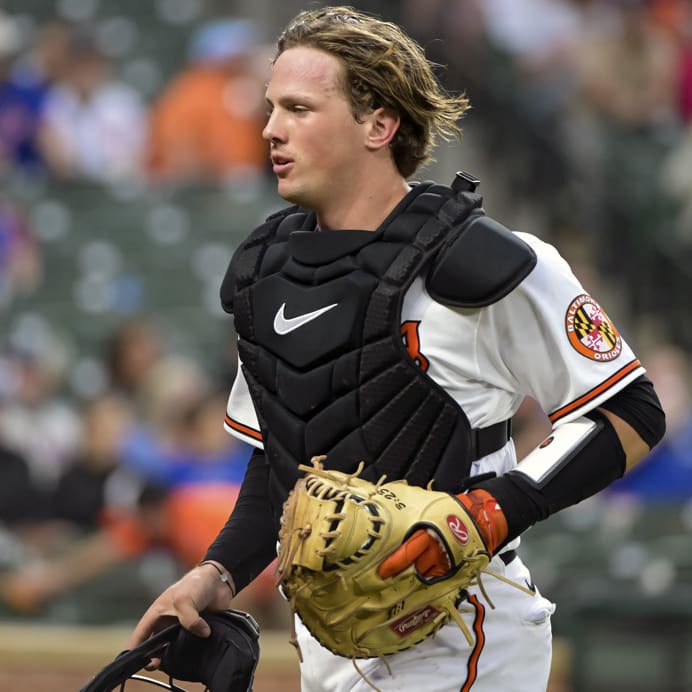This article is part of our Pitching 3D series.
It's the time of year when top pitching prospects start getting the call to join the big club, and the past few weeks have seen a number of pitchers whose fantasy value went from zero to palpable faster than a flight from Rochester to Minneapolis. The two kids with the highest ceilings – Lucas Giolito and Julio Urias – are both still milking cows down on the farm, but a small army of impact arms have invaded MLB over the past couple weeks. The fantasy value of these rookies is extremely volatile, with expectations ranging from Noah Syndergaard 2.0 to back in the minors after putting an ugly dent to the pitching ratios.
Let's dive into a trio of pitchers who made their MLB debuts over the past two weeks.
Jose Berrios (RHP)
Age: 21
Debut: April 27
2016 GS: 2
Currently in rotation? Yes
He might lack the vaulted ceiling of Giolito or Urias, but Berrios was possibly the most coveted starting pitcher of the prospect class for single-year leagues in 2016. He started the season on the cusp of the majors, with enough holes in the Minnesota pitching staff to create an opportunity, so it wasn't surprising that he got the call with the season less than a month old. The expectation of a smooth transition to the majors further fueled his prospect helium, so fantasy managers lined up for his services when Berrios made his debut at home against the Indians on April 27. The right-hander has
It's the time of year when top pitching prospects start getting the call to join the big club, and the past few weeks have seen a number of pitchers whose fantasy value went from zero to palpable faster than a flight from Rochester to Minneapolis. The two kids with the highest ceilings – Lucas Giolito and Julio Urias – are both still milking cows down on the farm, but a small army of impact arms have invaded MLB over the past couple weeks. The fantasy value of these rookies is extremely volatile, with expectations ranging from Noah Syndergaard 2.0 to back in the minors after putting an ugly dent to the pitching ratios.
Let's dive into a trio of pitchers who made their MLB debuts over the past two weeks.
Jose Berrios (RHP)
Age: 21
Debut: April 27
2016 GS: 2
Currently in rotation? Yes
He might lack the vaulted ceiling of Giolito or Urias, but Berrios was possibly the most coveted starting pitcher of the prospect class for single-year leagues in 2016. He started the season on the cusp of the majors, with enough holes in the Minnesota pitching staff to create an opportunity, so it wasn't surprising that he got the call with the season less than a month old. The expectation of a smooth transition to the majors further fueled his prospect helium, so fantasy managers lined up for his services when Berrios made his debut at home against the Indians on April 27. The right-hander has been off-kilter in his first couple starts, and his inability to hit the left side of the plate has limited his options in the chess match with hitters, while giving batters the advantage of honing on a smaller zone.
Stats: Berrios has been a control artist in the minors but one who could also miss some bats, as evidenced by his career 9.5 K/9 and 2.5 BB/9 in a stretch that included more than 450 innings over five seasons. He's also kept the ERA under 3.00 and allowed just 0.5 HR/9 over his minor-league career. From a statistical standpoint, he's done everything to prove that he's ready for the jump.
Stuff: The right-hander has brought big heat with him to the show, averaging 94.4 mph on his fastball and topping out at 97. He throws both the four- and two-seam varieties, and when the pitch is on it has great arm-side run. That run got away from him frequently in his first two starts of the season, missing fastball targets to the arm side all day long. The breaking ball flashed filth, leaving his hand on the same plane as the fastball, with a late dive that coaxes swings and misses. The pitch has been inconsistent, and when he fails to reach full extension at release point then the breaker flattens out. I haven't seen enough decent changeups, as the 13-percent pitch encountered the same issues with pitch location to the arm side as his fastball.
Mechanics: Berrios had my favorite delivery of all the first-round pitchers in the 2012 draft (he was a supplemental pick after the first round), with a rare combination of big power and strong stability. His mechanical trademark was huge momentum as he absolutely charged toward the plate, and I feared that a team would slap him with the "violent" tag and slow him down. Sure enough, the delivery was noticeably slow in his first two starts, and though his raw momentum was still impressive (a 55-to-60 grade on the 20-80 scale), it was a big step back from the 65-to-70 grade momentum that he had out of high school. I have seen him deliver the plus momentum in the minors, and the biggest implication is that his pitch command gets compromised at slower speeds, screwing with his mechanical timing and throwing off his release point. Things looked better from the stretch, where he had a better burst to the plate and his alignment wasn't quite so out of whack, so the solution to his problems are right in front of him. He has all of the raw components to be an excellent starter, but he needs to get back to what makes him great in order to smooth out his timing, rediscover his release point and reap all the benefits of big momentum.
Sean Manaea (LHP)
Age: 24
Debut: April 29
2016 GS: 2
Currently in rotation? Yes
Manaea has a reputation for being very inconsistent. Two scouts that see him on different days will have very different reports, and those who have seen him multiple times know that he can play a convincing act of Jekyll and Hyde from start to start, with volatility to his stuff, delivery and results. Southpaws are given a longer leash to figure out consistency, and Manaea's minor-league journey gave the impression that he was ready for the jump.
Stats: Manaea's been all about the strikeouts in the minor leagues, striking out 257 batters in 214 innings (10.8 K/9) and keeping runs off the scoreboard with a 2.81 ERA, but the bouts of inconsistency have contributed to a rate of 3.5 BB/9. His first two turns at the highest levels haven't been so kind, with each involving four earned runs over 5.0 frames with eight baserunners allowed. He walked more batters than he struck out against the Astros, but the games were otherwise so similar that he earned identical Game Scores of 42.
Stuff: The fastball was a belt loop above average, sitting in the 92-94 mph zone and spiking 95 mph on occasion, but his command of the pitch wavered throughout both of his first two starts. The fastball has been responsible for 10 of his 11 hits allowed this year, including both home runs and all five of his walks. The slider is the headliner, and in his first two games batters have gone 0-for-11 with eight strikeouts on at-bats that finished with the breaking pitch. The slider is deceiving, as it comes out of his hand on a fastball plane and he releases both pitches from the same low, near-sidearm slot. He's thrown eight changeups, mostly to prove that he has one.
Mechanics: It's very common for low arm-slot pitchers to have great posture at release point, because the two elements are related – the more a pitcher straightens his spine, the lower his arm slot will be. Strong posture often stems solid balance earlier in the delivery, but Manaea has a pronounced drop after maximum leg lift and hunches over during his stride, giving him a poor balance grade. The balance issues are tied to his relative lack of command, as his inconsistencies during the stride phase of his delivery extend to timing as well as stability. It's tougher to repeat stride and momentum when a pitcher's balance is all over the place during that portion of the delivery.
Blake Snell (LHP)
Age: 23
Debut: April 23
2016 GS: 1
Currently in rotation? No
Snell came up for a spot-start near the end of April, making his major-league debut at Yankee Stadium. He pitched very well, especially considering the historical circumstances, giving up just one run, two hits and a walk over 5.0 innings. He also had six strikeouts, but his pitch count hit 90 before he could start the sixth inning and he was taken out of the game.
Stats: Snell was a strikeout machine last season, punching out 163 batters in 134 innings across three different levels, and for his minor-league career the southpaw has posted a clean 10.0 K/9. The free passes have followed, with a career 4.5 BB/9 in nearly 450 minor-league innings, a stretch that has included a 2.81 ERA and just 0.5 HR/9 in his pro career.
Stuff: Heat plays hotter when its coming from a left-hander, and Snell's 95 mph velocity touched 97 in his debut, and the pitch feels even faster to a hitter when thrown up in the zone. Snell lived in the upper third of the strike zone with the fastball in his first start, and the strategy worked, as six of the seven empty swings that he coaxed came on four-seam fastballs. He offsets the fastball with a pair of breaking pitches, including a slow curveball in the mid-70s and a mid-80s slider, but the hammer is his secondary of choice. The loopy curve comes from an over-the-top arm slot and has vertical pop out of his hand, leaving his hand on a completely different plane as his fastball. This provides an obvious advantage for advanced hitters, but he gets so much movement on the pitch that he might be able to get away with it even when batters see the curve out-of-hand. It also means that he is twisting the wrist rather than supinating in order to invoke spin, a dangerous method that puts an even heavier onus on his usage pattern and frequency of curves.
Mechanics: Getting the tallest possible release point appears to be part of the aim for Snell, whose 7.11-foot release height is more than two standard deviations above the mean. The tall release effectively exaggerates the vertical component of his killer curve, but his mechanical sacrifices of balance, posture and release distance bring the efficacy of the technique into question. He has massive spine tilt that he starts early in the kinetic chain, and by release point the spine is curled like a question mark in 30-grade posture. He creates massive torque that instigates outstanding arm speed, utilizing both the upper- and lower- halves to create hip-shoulder separation, but his combination of big power and low stability is as combustible as it is enticing.








